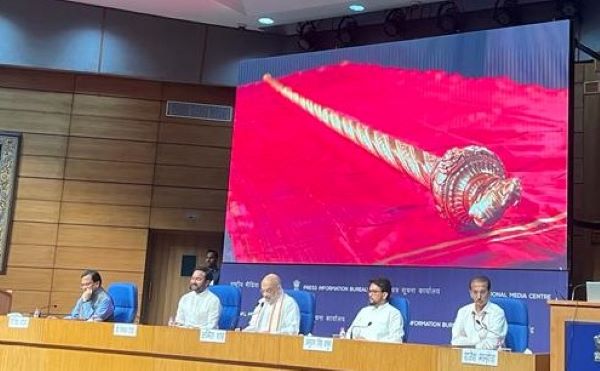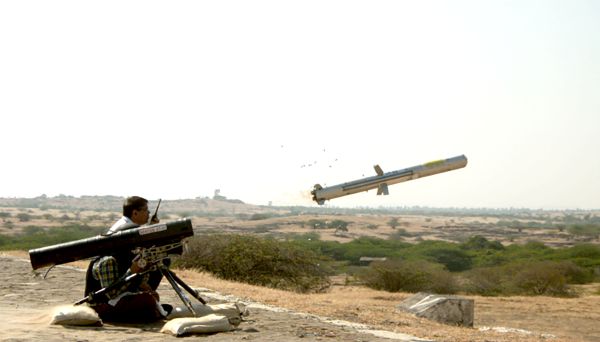
Team News Riveting
New Delhi, May 24
The historic sceptre ‘Sengol’ that symbolised India’s Independence and transfer of power from British, will be placed in the new Parliament building.
Prime Minister Narendra Modi will inaugurate the new building of Parliament on Sunday. Union Home Minister Amit Shah on Wednesday said ‘Sengol’ (sceptre), a ‘significant historical’ symbol signifying the transfer of power from Britain to India, will also be placed in the new Parliament building. The Prime Minister will hand it over to the Lok Sabha Speaker, Om Birla.
Shah said the history and significance of the ‘sengol’ was not known to many. “It’s installation in the new Parliament is an attempt to link our cultural traditions with our modernity,” Shah said, adding that the plan to install the sengol in the new Parliament also reflects the far-sightedness of Prime Minister Narendra Modi.
The sengol is now at a museum in Allahabad from where it will now be brought to its new address – the central vista. The Prime Minister will felicitate 60,000 workers engaged in the project.
According to historical archives, Lord Mountbatten asked the Prime Minister-in-waiting Jawahar Lal Nehru as to how he wished to symbolise the attainment of Independence. Jawaharlal Nehru in turn sought the opinion of C Rajagopalachari, the last Governor-General of India. The former CM of Madras State informed Nehru about a Tamil tradition when the high priest (‘rajaguru’) of the State would present the new king with a sceptre when he assumed power.
C Rajagopalachari suggested that Nehru may receive a sceptre from Mountbatten to mark India’s independence. Nehru readily agreed and also gave the responsibility of arranging the ornamented staff to C Rajagopalachari, who then contacted Thiruvaduthurai Aadheenam.
The then seer, 20th Gurumaha Sannithanam Sri La Sri Ambalavana Desika Swamigal, who was ailing at the time, accepted the responsibility and arranged for making the gold sceptre with a bull (‘nandhi’) on top by a jeweller in the then Madras.
The seer sent a delegation consisting of his representative Sri La Sri Kumaraswamy Thambiran, Manickam Odhuvaar (priest who recites prayer in the mutt) and the mutt’s nadhaswaram vidhwan, TN Rajarathinam Pillai, to New Delhi. The seer also sent an address in English to congratulate Pt. Jawaharlal Nehru on the occasion. The delegation flew in a special plane arranged by the government.
On August 14, 1947, around 11.45pm, minutes before India’s got its independence, the delegation presented Nehru with the sceptre in the presence of Rajendra Prasad and other leaders as instructed by the seer. Current seer of the Aadheenam, 24th Gurumaha Sannithanam Sri La Sri Ambalavana Desika Paramachariya Swamigal, said,
“Sri La Sri Kumaraswamy Thambiran received the sceptre from Lord Mountbatten and sprinkled it with holy water. Manickam Odhuvaar chanted ‘kolaru pathigam’ hymns from ‘Thevaram’, composed by Shaivite saint Thirugnana Sambanthar, and maestro TN Rajarathinam played nadaswaram. As the odhuvaar recited the pathigam’s final verses, “Adiyargal Vaanil Arasalvar Aanai Namathe” (“We command that His Humbleness shall rule the Heavens’), Sri La Sri Kumaraswamy Thambiran handed over the sceptre to Pandit Jawaharlal Nehru, smeared ashes on his forehead, and garlanded him.
A Apparsundaram, a social activist from Mayiladuthurai, said, “Not many people are aware of this historic incident. The event should be added to middle or higher school textbooks for students across the country.”
Many leaders including Presidents, Prime Ministers, Governors, and Chief Ministers still visit the Aadheenam to seek the seer’s blessings. The mutt has been involved in social activities and charity work all through its history.



